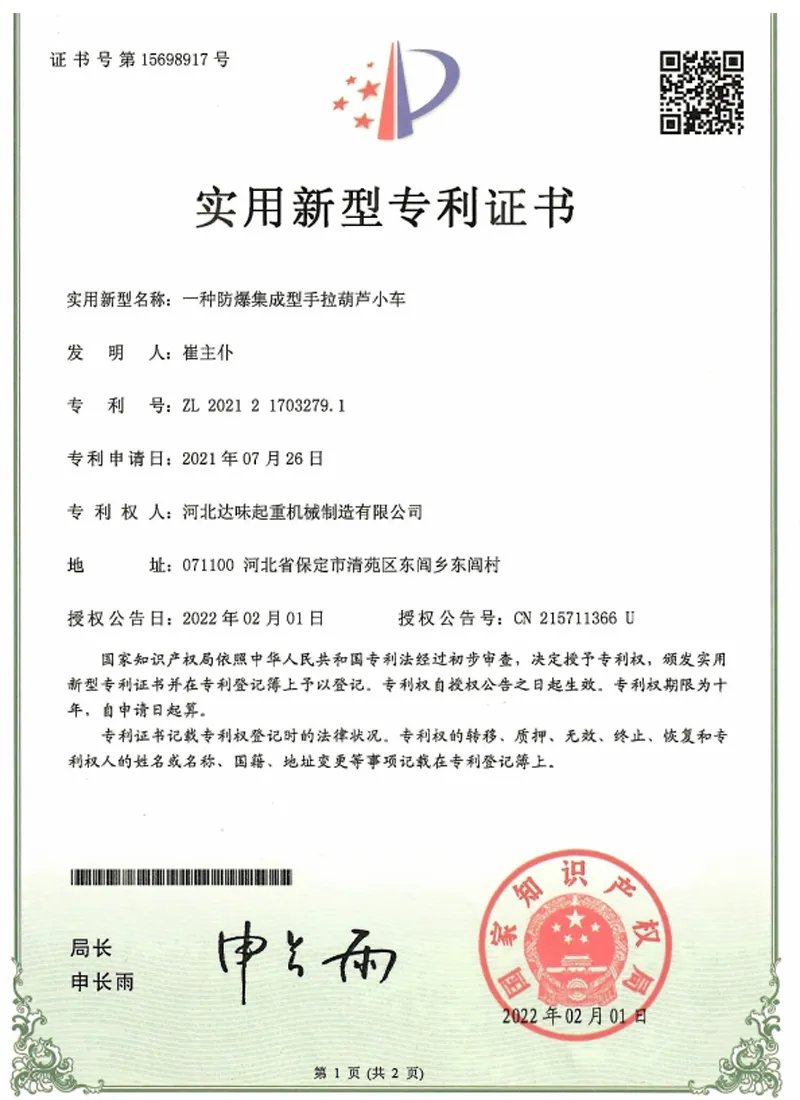heavy load moving equipment
Heavy Load Moving Equipment Essential Tools for Efficient Material Handling
In various industries, from construction to manufacturing, the need for moving heavy loads is a common challenge. The efficient transportation and handling of heavy items can significantly impact productivity and operational safety. To address these challenges, businesses rely on specialized equipment designed to facilitate the movement of heavy loads safely and effectively. This article explores different types of heavy load moving equipment, their benefits, and considerations for selecting the right tools for specific applications.
Types of Heavy Load Moving Equipment
1. Forklifts Perhaps the most recognized heavy load moving equipment, forklifts are versatile machines used in warehouses, manufacturing plants, and construction sites. They come in various sizes and designs, including electric, diesel, and LPG-powered models. Forklifts are equipped with forks that can be raised and lowered to stack, retrieve, and transport heavy loads efficiently. Operators must be trained and licensed to ensure safe operation.
2. Cranes Cranes are essential for moving very heavy loads over long distances and heights. They come in different types, including overhead cranes, mobile cranes, and tower cranes, each suited for specific applications. Overhead cranes are commonly utilized in factories and large warehouses, allowing for the movement of loads above the ground without obstructing floor space. Mobile cranes are ideal for construction sites, offering flexibility to move and position loads as needed.
3. Pallet Jacks and Hand Trucks For smaller loads, pallet jacks and hand trucks offer a cost-effective solution. Manual pallet jacks allow operators to lift and transport palletized loads across short distances, while hand trucks enable the movement of heavy boxes and equipment with ease. Although these tools require manual labor, they significantly reduce the physical effort needed to move heavy items.
4. Skates and Rollers When obstructive spaces or uneven surfaces are present, skates and rollers assist in maneuvering heavy machinery or large objects. These devices are placed under the load, allowing it to be pushed or pulled with minimal effort. This equipment is commonly used for relocating large machinery during maintenance or facility reconfigurations.
5. Winches and Hoists Winches and hoists are mechanical devices used to lift or pull heavy loads. Winches typically involve a spool and a cable that can be wound to hoist or pull items, while hoists are designed to lift loads vertically. These tools are invaluable in construction and industrial applications where heavy lifting is required but space constraints limit the use of traditional cranes.
Benefits of Heavy Load Moving Equipment
Using specialized equipment for moving heavy loads offers numerous advantages
- Safety The primary benefit of using heavy load moving equipment is the enhanced safety it provides. Properly operated machines reduce the risk of injuries associated with manual handling, such as musculoskeletal disorders and accidents.
heavy load moving equipment

- Efficiency Heavy load moving equipment allows for quicker handling times compared to manual efforts
. This efficiency can lead to increased productivity, enabling workers to focus on other tasks.- Reduced Labor Costs By minimizing the number of workers required to move heavy loads, businesses can save on labor costs while maximizing the effectiveness of their workforce.
- Versatility Many heavy load moving equipment pieces are designed to handle various load sizes and types, providing flexibility in operations.
Considerations for Selecting Heavy Load Moving Equipment
When choosing the right equipment for moving heavy loads, several factors should be considered
1. Load Capacity Assess the maximum weight of the loads to be moved to ensure the selected equipment can handle the demands safely.
2. Environment Consider the working environment, including floor surfaces, space constraints, and overhead clearance, as these factors will influence equipment selection.
3. Frequency of Use Equipment that is used frequently may warrant investment in higher-quality, more durable machines to withstand the demands of repeated use.
4. Operator Training Ensure that personnel are adequately trained to operate heavy load moving equipment. This training is crucial for maintaining safety standards and operational efficiency.
In conclusion, heavy load moving equipment is vital for industries that require the transportation of cumbersome items. By utilizing forklifts, cranes, pallet jacks, and other tools, businesses can foster safer and more efficient work environments. Selecting the right equipment tailored to specific operational needs is paramount to optimizing productivity while ensuring safety.
-
Portable 2000 lb Gantry Crane | Heavy-Duty & AdjustableNewsAug.30,2025
-
Versatile Lifting Solutions with Gantry and Overhead CranesNewsAug.29,2025
-
The Versatile Mobile Gantry Crane SolutionNewsAug.29,2025
-
Reliable Movement with Heavy Machinery Skates and RollersNewsAug.29,2025
-
Reliable Lifting Performance with 2000 lb Gantry Crane and 2 Ton Overhead SystemsNewsAug.29,2025
-
Maximize Lifting Efficiency with PML Magnetic LiftersNewsAug.29,2025
-
Efficient Relocation Starts with Reliable Machinery MoversNewsAug.29,2025
